-
 Bitcoin
Bitcoin $84,123.7119
1.29% -
 Ethereum
Ethereum $1,824.8439
0.75% -
 Tether USDt
Tether USDt $0.9997
0.01% -
 XRP
XRP $2.1361
3.85% -
 BNB
BNB $598.3323
1.01% -
 Solana
Solana $122.3265
5.60% -
 USDC
USDC $1.0001
0.01% -
 Dogecoin
Dogecoin $0.1714
5.64% -
 Cardano
Cardano $0.6664
2.54% -
 TRON
TRON $0.2386
-0.03% -
 Chainlink
Chainlink $13.0133
1.54% -
 UNUS SED LEO
UNUS SED LEO $9.1926
-2.61% -
 Toncoin
Toncoin $3.4025
-3.65% -
 Stellar
Stellar $0.2607
0.40% -
 Avalanche
Avalanche $18.3135
0.87% -
 Sui
Sui $2.2724
1.94% -
 Shiba Inu
Shiba Inu $0.0...01240
2.02% -
 Hedera
Hedera $0.1649
1.25% -
 Litecoin
Litecoin $84.6845
1.62% -
 Polkadot
Polkadot $4.0598
1.03% -
 MANTRA
MANTRA $6.2869
-1.57% -
 Bitcoin Cash
Bitcoin Cash $302.8642
0.26% -
 Bitget Token
Bitget Token $4.5347
0.70% -
 Dai
Dai $1.0001
0.01% -
 Ethena USDe
Ethena USDe $0.9991
-0.04% -
 Hyperliquid
Hyperliquid $12.1319
1.65% -
 Monero
Monero $217.1102
1.51% -
 Uniswap
Uniswap $5.9265
1.27% -
 Pi
Pi $0.5024
-8.47% -
 Pepe
Pepe $0.0...07314
8.36%
How to pair SafePal S1 with a hardware wallet?
Direct pairing of SafePal S1 with another hardware wallet is not possible or recommended; use independent wallets or a software intermediary for asset management.
Apr 02, 2025 at 02:49 am
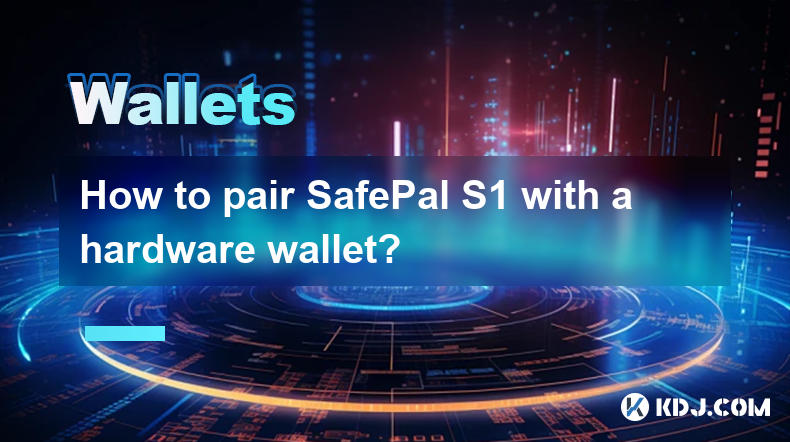
This article addresses the question of pairing a SafePal S1 hardware wallet with another hardware wallet. It's important to understand that directly pairing two hardware wallets is generally not possible and not recommended. Hardware wallets are designed to be independent and secure units, each managing its own private keys. Attempting to directly link them compromises their security. This article will explore alternative methods to achieve similar functionality.
Understanding the Limitations
The SafePal S1, like other hardware wallets, prioritizes security by isolating its private keys. This prevents unauthorized access, even if the device itself is compromised. Direct pairing with another hardware wallet would necessitate sharing these private keys, completely negating the security benefits. Therefore, focusing on alternative approaches is crucial.
Alternative Methods for Managing Multiple Wallets
Instead of directly pairing, consider these methods for managing assets across multiple hardware wallets:
Using Multiple Wallets Independently: This is the safest and most recommended approach. Keep your assets separated across different wallets, each with its own seed phrase. This limits the impact of a potential compromise on a single device. Each wallet operates independently and securely.
Utilizing a Software Wallet as an intermediary: A software wallet can act as a bridge to manage multiple hardware wallets. You can transfer crypto assets between your hardware wallets via the software wallet, but always exercise caution and verify all transactions meticulously. Remember, the security of this method depends heavily on the security of the software wallet.
Employing a Multi-Signature Wallet: For advanced users, a multi-signature wallet setup can offer increased security. This involves multiple private keys required to authorize a transaction. You could use your SafePal S1 as one of the signing devices, adding another layer of security. However, setting this up correctly requires technical expertise.
Step-by-Step Guide: Transferring Assets Between Wallets (Using a Software Wallet)
Let's outline the process using a software wallet as an intermediary. Remember to choose a reputable and secure software wallet. This example uses a hypothetical software wallet named "CryptoManager."
Step 1: Secure Your Software Wallet: Download and install CryptoManager, ensuring you understand its security features and best practices. Remember to protect your software wallet with a strong password.
Step 2: Transfer from SafePal S1 to CryptoManager: Connect your SafePal S1 to your computer. Open CryptoManager and initiate a transfer of your chosen cryptocurrency from your SafePal S1 to your CryptoManager wallet address. Double-check the recipient address before confirming.
Step 3: Transfer from CryptoManager to the Second Hardware Wallet: Once the transfer to CryptoManager is complete, initiate a transfer from CryptoManager to the address of your second hardware wallet. Again, verify the recipient address meticulously.
Step 4: Verification: After the transfer is complete, verify the balance on both your SafePal S1 and your second hardware wallet. Ensure the transferred assets are reflected correctly.
Addressing Security Concerns
The security of your cryptocurrency depends entirely on the security of your individual wallets and the process used to transfer funds. Never share your seed phrases with anyone, and always use strong, unique passwords. Be cautious of phishing scams and malicious software. Regularly update your hardware and software wallets with the latest security patches.
Common Questions
Q: Can I directly connect my SafePal S1 to another hardware wallet?
A: No, direct pairing between hardware wallets is not possible and is highly discouraged. Each wallet operates independently to maintain its security.
Q: What is the safest method for managing assets across multiple hardware wallets?
A: The safest method is to use each hardware wallet independently, with each managing its own set of assets and seed phrases.
Q: Are there any risks involved in using a software wallet as an intermediary?
A: Yes, using a software wallet introduces additional risk, as it's less secure than a hardware wallet. Choose a reputable software wallet and ensure you understand its security implications. Always double-check all transactions.
Q: What is a multi-signature wallet, and how does it relate to this scenario?
A: A multi-signature wallet requires multiple private keys to authorize transactions, adding an extra layer of security. You could use your SafePal S1 as one of the signing devices in a multi-signature setup.
Q: What steps can I take to ensure the security of my assets during these transfers?
A: Always verify recipient addresses before confirming any transactions. Use strong passwords, enable two-factor authentication where available, and regularly update your wallets’ firmware. Be wary of phishing attempts and malicious software.
Disclaimer:info@kdj.com
The information provided is not trading advice. kdj.com does not assume any responsibility for any investments made based on the information provided in this article. Cryptocurrencies are highly volatile and it is highly recommended that you invest with caution after thorough research!
If you believe that the content used on this website infringes your copyright, please contact us immediately (info@kdj.com) and we will delete it promptly.
- Shibarium Blockchain Breaks New Ground by Surpassing 1 Billion Transactions
- 2025-04-05 09:30:12
- FDUSD Depegged by 11% Following Insolvency Rumors
- 2025-04-05 09:30:12
- Fintech security company ATON announced on the 3rd that it has successfully established and officially opened a response system for NH Nonghyup Bank's real transaction testing of Central Bank digital currency.
- 2025-04-05 09:25:12
- Bybit Ordered to Take Down All Digital Platforms in Malaysia Within 14 Working Days
- 2025-04-05 09:25:12
- Bitcoin (BTC) Faces Growing Concerns of a Potential Price Correction After Notable Increase in Exchange Inflows
- 2025-04-05 09:20:12
- BlackRock Launches iShares Bitcoin ETP in Europe, Signaling Growing Institutional Interest in Bitcoin
- 2025-04-05 09:20:12
Related knowledge

How do I contact Rabby Wallet support?
Apr 04,2025 at 08:42am
Introduction to Rabby Wallet SupportIf you are a user of Rabby Wallet and need assistance, knowing how to contact their support team is crucial. Rabby Wallet offers various methods to reach out for help, ensuring that users can get the support they need efficiently. This article will guide you through the different ways to contact Rabby Wallet support, ...
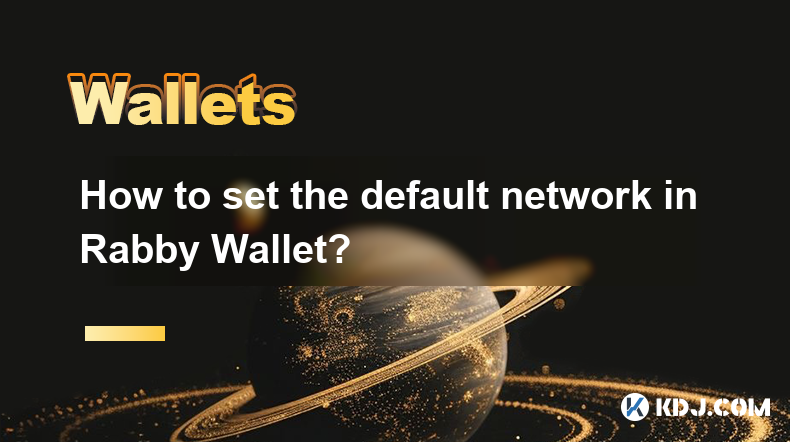
How to set the default network in Rabby Wallet?
Apr 04,2025 at 06:35am
Setting the default network in Rabby Wallet is a crucial step for users who frequently interact with different blockchain networks. This guide will walk you through the process of setting your preferred network as the default, ensuring a seamless experience when managing your cryptocurrencies. Whether you're using Ethereum, Binance Smart Chain, or any o...
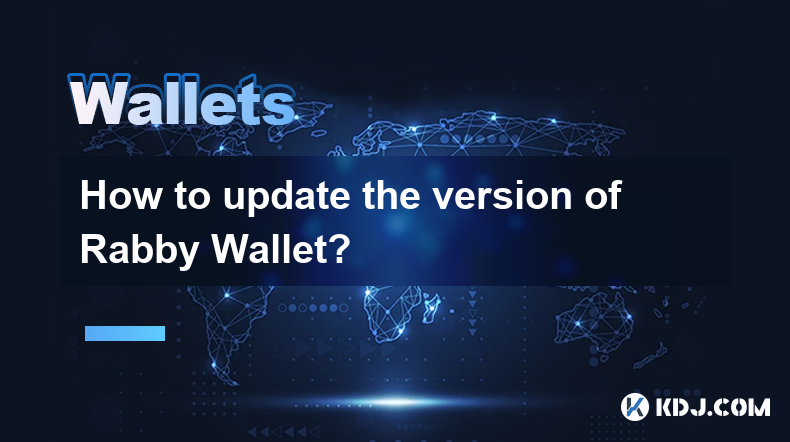
How to update the version of Rabby Wallet?
Apr 05,2025 at 02:14am
Updating the version of Rabby Wallet is an essential task to ensure you have the latest features, security enhancements, and bug fixes. This guide will walk you through the process of updating Rabby Wallet on different platforms, including desktop and mobile devices. Let's dive into the detailed steps for each platform. Updating Rabby Wallet on DesktopU...
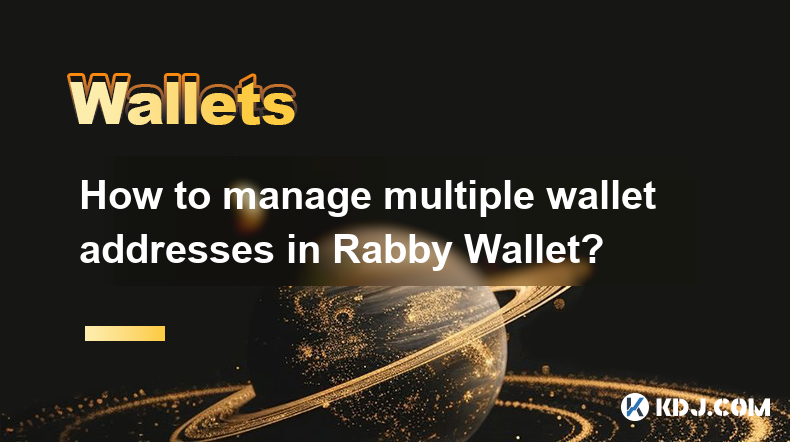
How to manage multiple wallet addresses in Rabby Wallet?
Apr 05,2025 at 07:14am
Managing multiple wallet addresses in Rabby Wallet can significantly enhance your cryptocurrency management experience. Whether you're a seasoned crypto enthusiast or a beginner, understanding how to efficiently handle multiple addresses can streamline your transactions and improve your security. In this article, we will explore the detailed steps and b...
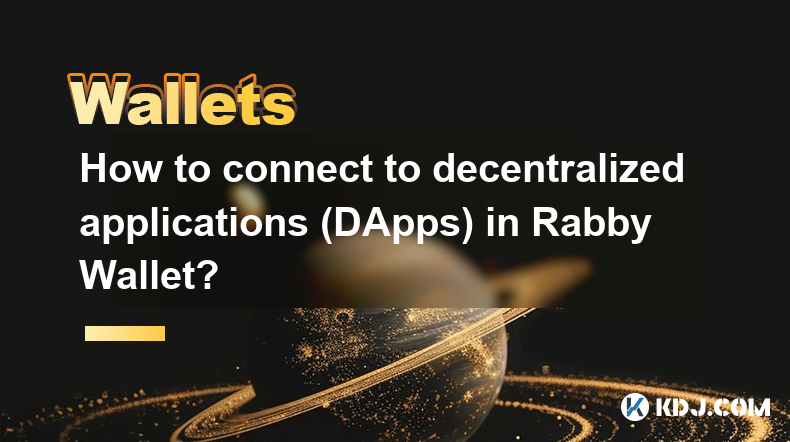
How to connect to decentralized applications (DApps) in Rabby Wallet?
Apr 05,2025 at 01:28am
Connecting to decentralized applications (DApps) using Rabby Wallet is a straightforward process that enhances your interaction with the burgeoning world of blockchain technology. Rabby Wallet, known for its user-friendly interface and robust security features, allows users to seamlessly interact with a variety of DApps across different blockchains. Thi...
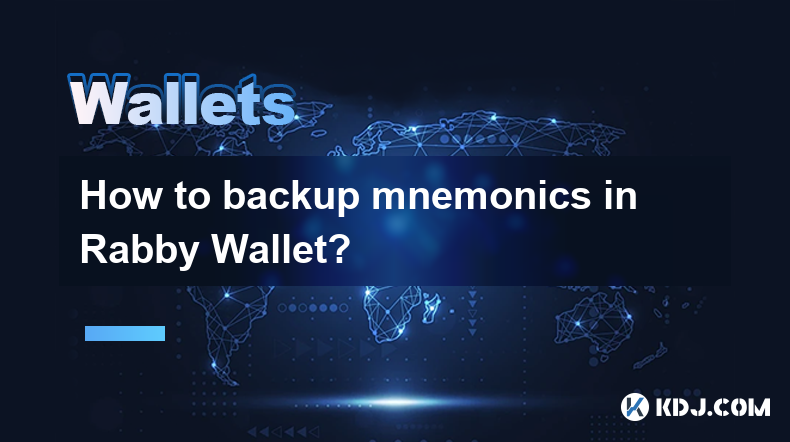
How to backup mnemonics in Rabby Wallet?
Apr 04,2025 at 02:21pm
Introduction to Rabby Wallet and MnemonicsRabby Wallet is a popular cryptocurrency wallet that offers users a secure way to manage their digital assets. One of the key features of Rabby Wallet is the use of mnemonics, which are a series of words that serve as a backup for your wallet. These mnemonics are crucial because they allow you to recover your wa...

How do I contact Rabby Wallet support?
Apr 04,2025 at 08:42am
Introduction to Rabby Wallet SupportIf you are a user of Rabby Wallet and need assistance, knowing how to contact their support team is crucial. Rabby Wallet offers various methods to reach out for help, ensuring that users can get the support they need efficiently. This article will guide you through the different ways to contact Rabby Wallet support, ...

How to set the default network in Rabby Wallet?
Apr 04,2025 at 06:35am
Setting the default network in Rabby Wallet is a crucial step for users who frequently interact with different blockchain networks. This guide will walk you through the process of setting your preferred network as the default, ensuring a seamless experience when managing your cryptocurrencies. Whether you're using Ethereum, Binance Smart Chain, or any o...

How to update the version of Rabby Wallet?
Apr 05,2025 at 02:14am
Updating the version of Rabby Wallet is an essential task to ensure you have the latest features, security enhancements, and bug fixes. This guide will walk you through the process of updating Rabby Wallet on different platforms, including desktop and mobile devices. Let's dive into the detailed steps for each platform. Updating Rabby Wallet on DesktopU...

How to manage multiple wallet addresses in Rabby Wallet?
Apr 05,2025 at 07:14am
Managing multiple wallet addresses in Rabby Wallet can significantly enhance your cryptocurrency management experience. Whether you're a seasoned crypto enthusiast or a beginner, understanding how to efficiently handle multiple addresses can streamline your transactions and improve your security. In this article, we will explore the detailed steps and b...

How to connect to decentralized applications (DApps) in Rabby Wallet?
Apr 05,2025 at 01:28am
Connecting to decentralized applications (DApps) using Rabby Wallet is a straightforward process that enhances your interaction with the burgeoning world of blockchain technology. Rabby Wallet, known for its user-friendly interface and robust security features, allows users to seamlessly interact with a variety of DApps across different blockchains. Thi...

How to backup mnemonics in Rabby Wallet?
Apr 04,2025 at 02:21pm
Introduction to Rabby Wallet and MnemonicsRabby Wallet is a popular cryptocurrency wallet that offers users a secure way to manage their digital assets. One of the key features of Rabby Wallet is the use of mnemonics, which are a series of words that serve as a backup for your wallet. These mnemonics are crucial because they allow you to recover your wa...
See all articles





















































































